Windows 10 Settings You Should Change Right Away
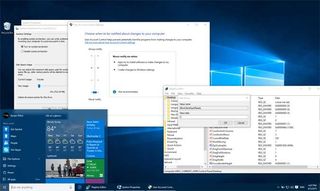
Microsoft's Windows 10 operating system offers a lot of compelling features, including Cortana and a new Start menu. However, some of its default settings don't provide you with the best performance or usability. From showing file extensions to enabling system protection backups, here are seven things you need to change as soon as you get started with Windows 10 after you've properly set up the operating system.
Enable System Protection / Create a Restore Point
What happens if you install a bad piece of software or a defective driver and your computer starts acting strangely or you can't even boot. You'll want to revert Windows 10 to the previous system restore point, which will turn back the clock on your drivers, programs and settings to a time when the system worked perfectly. However, Windows 10 comes with system protection disabled. If you want to protect yourself -- and you should -- set up restore points following the instructions below.
1. Search for "restore point" in the Windows search box.

2. Launch "Create a restore point" from the results. You should see a list of available drives.
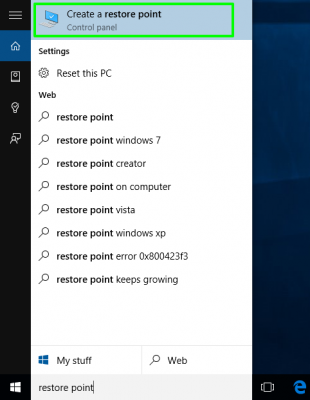
3. Select the system drive and click Configure. The system drive is usually the C: drive and has the word "(System)" written after its volume name.
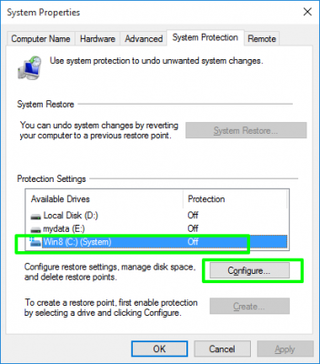
4. Toggle Restore Settings to "Turn on system protection," set the maximum disk space usage by moving the slider and click Ok. We recommend leaving 2 or 3 percent for restore pints but you may be able to get away with the lowest (1 percent).
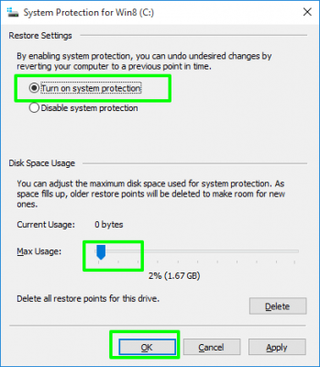
5. Click Create so that you create an initial restore point right away.
Not every deal is worth a squeal. Get only the good stuff from us.
The deal scientists at Laptop Mag won't direct you to measly discounts. We ensure you'll only get the laptop and tech sales that are worth shouting about -- delivered directly to your inbox this holiday season.
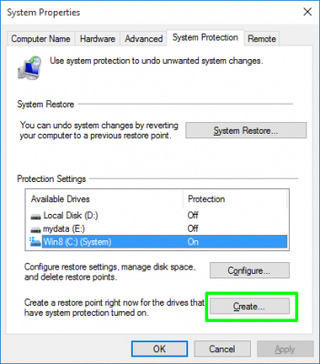
6. Name the initial restore point when prompted.
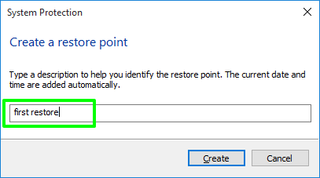
7. Click Close when it is done.
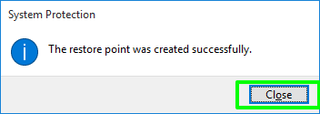
If you need to restore from one of these points, you can click the System Restore button on the System Protection tab. If you can't boot, you can hit F8 or Shift + F8 during boot to get to the emergency menu on some computers. On other PCs, if you can at least get to the log in screen, you can hold down Shift while you select Restart.
Show File Extensions and Hidden Files
By default, Windows 10 hides most file extensions so, when you're browsing through your files, you can't easily see what type of file they are. Your quarterly report, for example, will appear as "3dqreport" instead of "3dqreport.pptx" while that web page you saved will display as "homepage" rather than "homepage.htm" or "homepage.html."
Microsoft has been disabling extensions by default for the past several versions of its OS in a misguided effort to simplify the file system for users. However, this approach can create more problems than it solves. For example, I recently ran into a problem when linking to a font file because I referenced it as "myfont.ttf" when the hidden extension was in caps and the real name was "myfont.TTF."
In an effort to protect you from yourself, Microsoft also hides certain operating system files from you by default. But what if you need to find these files or edit them to troubleshoot? And can't you trust yourself not to delete important files? Here's how to show extensions and hidden files in Windows 10.
1. Navigate to the control panel. You can get there by hitting Windows + X and selecting Control Panel
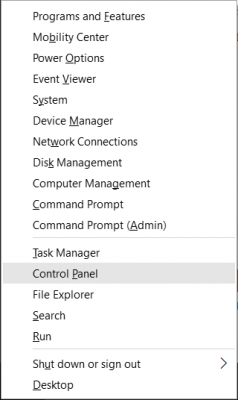
2. Open File Explorer Options. If you don't see the icon for it, change the control panel view (in the upper right corner) to large or small icons.
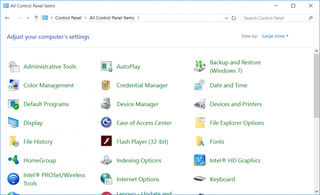
3. Navigate to the View tab.
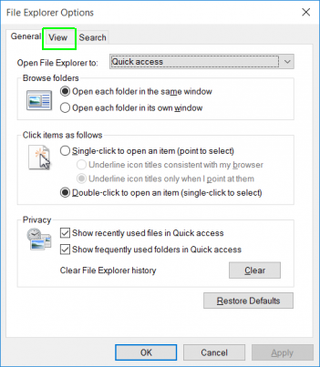
4. Toggle "Hidden files and folders" to "Show hidden files, folders and drives."
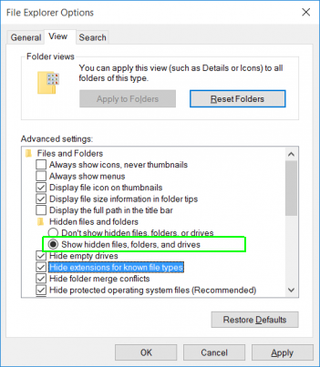
5. Uncheck "Hide empty drives," "Hide extensions for known file types" and "Hide protected operating system files."
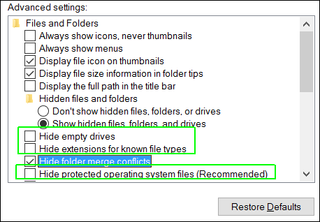
6. Click Yes when warned about unhiding protected files.
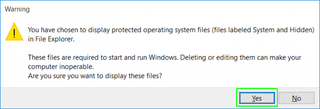
7. Click Ok.
Disable User Account Control
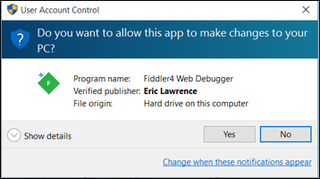
Windows wants to wag a finger at you every time you try to install a program or change a vital setting by popping up a dialog box and making you click Ok to continue. Why warn you if you already know what you're doing? Good question. Disable User Account control to stop the needless, annoying dialog boxes.
1. Search for "user account control" in the search box.

2. Open "Change User Account Control settings."
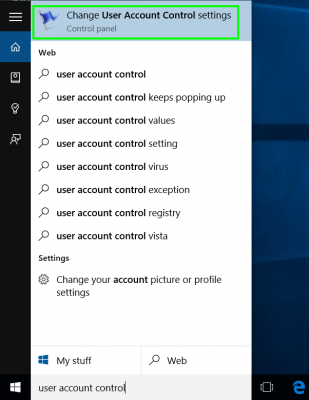
3. Slide the slider down to "Never notify" and click Ok.
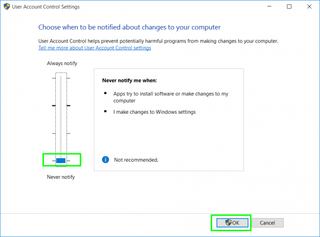
4. Click Yes when prompted.
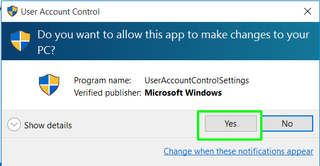
Disable the Lock Screen
Unless you have a tablet and, even if you do, the Windows lock screen is an unnecessary decoration that makes you click or swipe one extra time every time you boot or wake your computer. In order to unlock your computer, you have to dismiss the lock screen, but then still have to enter your password or PIN on the login screen. Why not just go straight to the login screen?
1. Open the registry editor. You can do that by typing regedit into the run box.
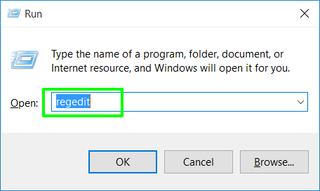
2. Navigate to HKEY_LOCAL_MACHINE\SOFTWARE\Policies\Microsoft\Windows.
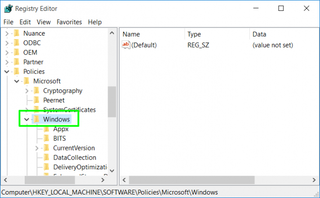
3. Create a registry key called Personalization if one doesn't already exist. You can create a new key by right clicking in the right pane and selecting Key.
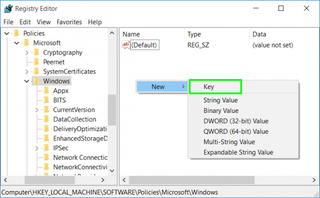
4. Create a new DWORD value within the Personalization key and named it NoLockScreen.
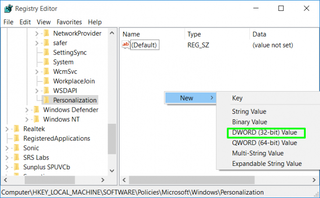
5. Set NoLockScreen to 1. You set the value by double clicking on NoLockScreen, entering the number and clicking Ok.
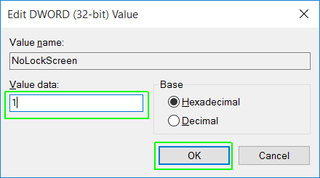
Change Your Default Browser
If you upgraded to Windows 10 from Windows 7 or 8, you'll notice that Microsoft Edge is now your default browser, even if Chrome or Firefox was your default before. Edge Browser is a bit faster than Chrome or Firefox, but doesn't provide the level of extensibility that its competitors offer. If you are a Chrome or Firefox user, you'll want to change your default right away.
1. Navigate to settings.
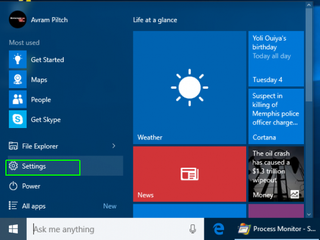
2. Click System.
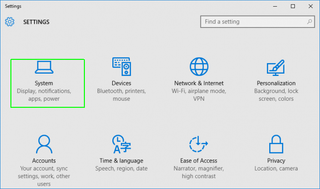
3. Select Default apps from the left pane.
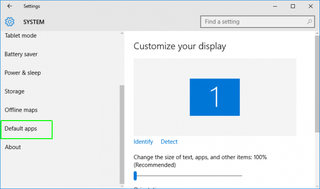
4. Click the Microsoft Edge icon under the "Web browser" header.
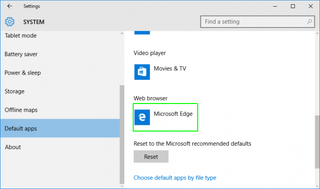
5. Select the browser you want as your new default (ex: Chrome).
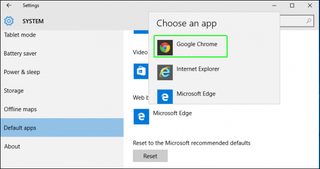
Delete the Windows.old Folder
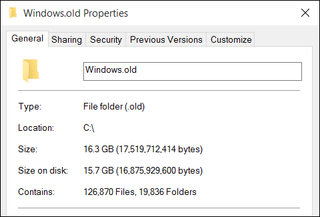
If you upgraded from Windows 7 or 8 to Windows 10, the installation program keeps a copy of your previous version of Windows around, just in case you want to roll back. However, those files, which live in a folder called Windows.old, take up 15 to 16GB of disk space. If you plan to stay with Windows 10 (and you should), there's no reason to keep these archived files around. Unfortunately, deleting them isn't quite as simple as dragging the Windows.old folder into the recycle bin.
1. Navigate to the control panel. You can get there by hitting Windows + X and selecting control panel.
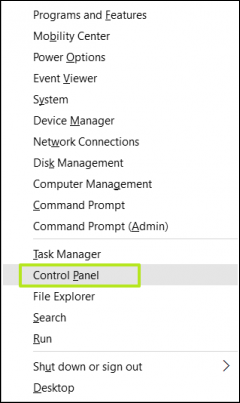
2. Open Administrative Tools.
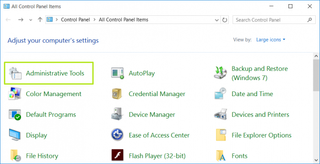
3. Launch Disk Cleanup.
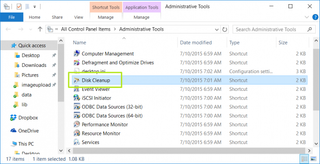
4. Click Ok, making sure that the C drive is selected.
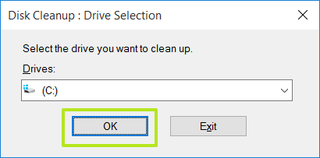
5. Click Clean up System Files.
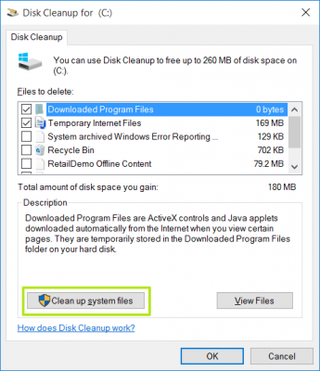
6. Click Ok again.
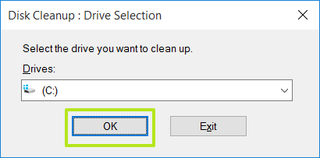
7 Check all the boxes on the "Files to delete" menu, especially "Previous Windows Installations" and "Temporary Windows Installation Files." Click Ok.
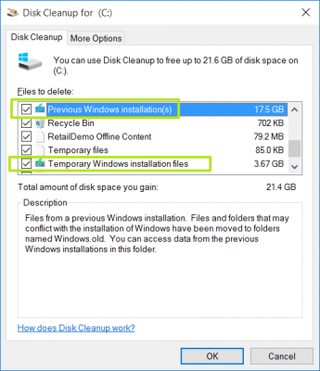
8. Click Delete Files. It will take a few minutes to compl
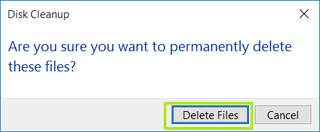
9. Click Yes to confirm.
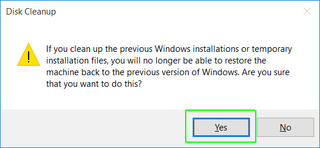
It will take a couple of minutes to complete the deletion process.
Speed Up Your Shutdowns
If you're old enough to have used a PC in the 1990s, you'll remember how quickly it shut off; you just hit the power button and walked away. Though Windows 10 boots very quickly, it can still take a while to shut down or restart. Part of the issue is that the OS waits a long time before exiting any programs you have running.
In some cases, Windows 10 even stops and waits indefineitely for you force close open applications. If you decided to reboot your computer, you probably meant to close that Wordpad window with the readme.txt file open in it. You can speed up your shutdowns by setting Windows 10 to kill processes and applications in short order.
1. Open regedit by hitting Windows + R and typing "regedit" into the box.
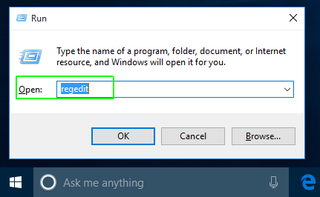
2. Navigate to HKEY_LOCAL_MACHINE\SYSTEM\CurrentControlSet\Control.
3. Open WaitToKillServiceTimeout.
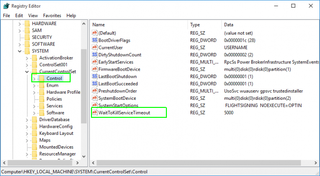
4. Set the value to 2000 and click Ok. This is the amount of time, in milliseconds, that Windows waits to kill an unresponsive service. Most sites recommend you set this no lower than 2000 so that the system has some time to shut these processes without causing a problem.
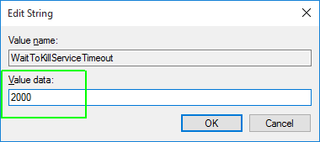
5. Navigate to HKEY_CURRENT_USER\Control Panel\Desktop.
6. Create a String Value and name it WaitToKillAppTimeOut. You can create a string value by right clicking in the right pane and selecting New > String Value.

7. Open WaitToKillAppTimeOut and set it to 2000.
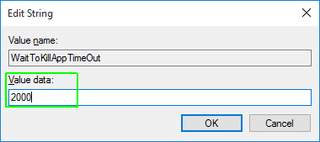
8. Create a String Value called HungAppTimeout and set it to 2000.
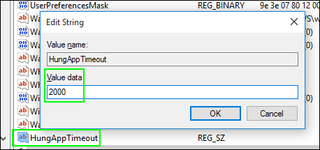
9. Create another Sting Called AutoEndTasks and set it to 1.
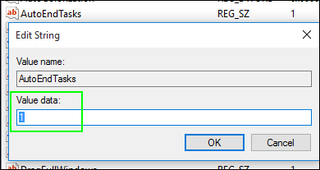
Windows 10 Basics
- 7 Settings to Change Right Away
- Windows 10 Keyboard Shortcuts to Save You Clicks
- 5 Ways to Take Screenshots
- Change Your Password in Windows 10
- Uninstall Programs in Windows 10
- Enable or Disable Tablet Mode
- Add a User (Child or Adult)
- Change the Screen Resolution
- Sync Your Settings Across Devices
- Sync iPhone with Windows 10
- Control Windows 10 with Your Voice
- Upgrade to Windows 10 From Windows 7 or 8
- Eliminate Blue Light With Night Light
- Create a New Folder
- Get to the Desktop in Windows 10
- Add a Printer
- All Windows 10 Tips
- Set Alarms
Now that you've optimized your Windows 10 laptop, learn how to whitelist programs by opening a port on Windows Firewall.
Having issues with Windows 10? Our sister site, Tom’s Hardware, has a team of staffers standing by in the forums to answer your questions 24/7.
